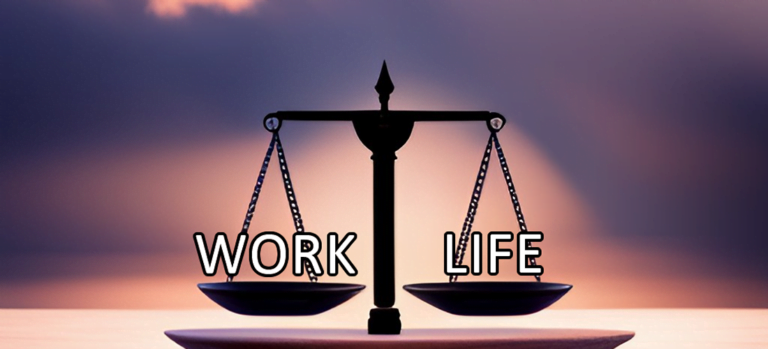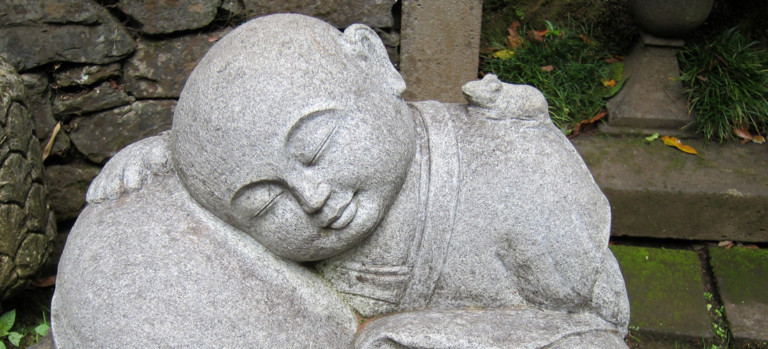Gratitude journaling is a self-care practice that involves writing down things for which you are thankful. This small, simple act encourages individuals to focus on positive aspects of their life, facilitating a shift from negative thoughts and fostering a sense of contentment. A gratitude journal can include anything that brought joy, no matter how small or mundane it may seem – from a warm cup of coffee to a kind word from a stranger. This form of journaling is a powerful tool in promoting overall wellbeing and cultivating a positive mindset.
Mindfulness and well-being practices are gaining increasing popularity across the globe. These methods are recognized as effective tools to reduce stress, improve mental health, and enhance quality of life. Activities like yoga, meditation, and breathing exercises have become a part of many people’s daily routines. Small talk around these themes has become common, allowing individuals to exchange insights, experiences, and techniques. This rise of mindfulness and well-being awareness serves as a reflection of society’s growing emphasis on mental health and self-care.
Gratitude journaling is a powerful and simple way to boost your mental and emotional health. This practice encourages individuals to focus on the positive aspects of life, which can, in turn, alleviate stress and promote a more optimistic outlook. Regularly jotting down things you’re thankful for can help you savor good experiences, improve self-esteem, and even build strong relationships. Small moments of gratitude can accumulate over time, leading to an overall increase in mental strength and resilience, especially during challenging times.
Getting Started with Gratitude Journaling
Here are steps to get started on setting up a gratitude journal:
- Choose a Medium: Decide whether you prefer a physical notebook or a digital platform. Both have their advantages: physical journals offer a tactile, personal experience, while digital journals can be easily edited and are always at hand if you use a mobile device.
- Set a Routine: Consistency is key in gratitude journaling. You might find it beneficial to write in your journal at the same time each day, such as in the morning to set a positive tone for the day, or in the evening as a reflective practice.
- Start Small: Begin by listing three things you’re grateful for each day. As you get into the habit, you can gradually increase this number.
- Be Specific: Instead of writing broad statements, try to write about specific events or people. This can make your expressions of gratitude more meaningful and impactful.
- Incorporate it Into Meditation or Mindfulness Practices: If you practice mindfulness or meditation, consider integrating your gratitude journaling into these routines. This can enhance the overall experience and reinforce the habit.
Remember, the aim of a gratitude journal is not to create a chore, but rather to cultivate a greater appreciation for the good in your life. It is a personal and flexible tool, so feel free to adapt these tips to best suit your lifestyle and preferences.
Best Time and Frequency for Journaling
The most effective time and frequency for gratitude journaling can vary depending on individual preferences and lifestyles. However, many experts suggest setting aside time in the morning or before bed for this practice. Mornings can be an optimal time as it allows one to set a positive tone for the day ahead. Evening journaling, on the other hand, can serve as a peaceful reflection of the day’s events.
Regarding frequency, a common recommendation is to journal at least once a week. Yet, some may find daily entries more beneficial. The key is consistency; regular gratitude journaling can facilitate a more persistent feeling of positivity and appreciation in one’s life.
Selecting a Format
When selecting a format for gratitude journaling, consider your comfort level and accessibility. Some prefer the traditional approach of pen and paper, as it provides a tangible and personal touch. The act of writing can be therapeutic, and a physical journal is always accessible.
On the other hand, digital journaling, through applications or devices, can offer convenience, especially for those on the go. With digital journals, entries can be easily edited, organized, and even shared. However, ensure the platform you choose respects your privacy and data security. Ultimately, the best format is one that encourages consistency in your gratitude journaling practice.
The Art of Noticing
Mindful observation plays a pivotal role in the practice of gratitude journaling. By intentionally focusing on the present moment, we are able to appreciate the small, everyday occurrences that we may otherwise overlook, thereby adding richness to our gratitude journals. Mindful observation grounds us in the here and now, enabling us to redirect our thoughts from past regrets or future anxieties to the abundance present in our current circumstances. This mindfulness, in turn, enhances the depth and authenticity of our gratitude journaling, making it an even more powerful tool for cultivating positivity and well-being.
Gratitude journaling encourages you to write down moments, no matter how small, that brought you happiness during your day. Maybe it was a good cup of coffee, a kind message from a friend, or a beautiful sunset. By consistently taking time to acknowledge these experiences, you create a mindset of appreciation and positivity. This simple act of gratitude journaling can slow down the pace of life, drawing attention to the joyous moments often overlooked in the hustle and bustle of daily life.
Fostering Resilience and Positivity
Gratitude journaling is a powerful tool that can help shift focus from negativity to positivity. The act of writing down what we are grateful for forces us to pay attention to the good things in life we might normally take for granted. By highlighting the positive aspects of our day, we gradually shift our mindset from focusing on what’s going wrong to appreciating what’s going right.
Over time, this practice can lead to a more optimistic outlook on life, a reduction in stress and anxiety, and an increased sense of overall well-being. Gratitude journaling is not about dismissing real challenges or difficulties, but rather about finding balance and cultivating a positive mindset amidst life’s ups and downs.
“Post-traumatic growth” refers to the psychological transformation that occurs when individuals face traumatic events and subsequently experience positive changes in their lives as a result. This is a process where adversity serves as a catalyst for personal growth and resilience. Gratitude journaling, a practice that emphasizes noting down aspects of one’s life one is thankful for, is known to facilitate this growth. It shifts the focus from the negative experiences to appreciating the positive ones, affirming the inherent goodness in one’s life. By consciously acknowledging the good, individuals can minimize the impact of trauma, fostering a sense of optimism and resilience that aids in the process of post-traumatic growth.
Deepening Connections and Relationships
Gratitude journaling has powerful implications for enriching interpersonal relationships. Expressing appreciation for a loved one’s actions or qualities in writing allows for a deeper understanding and recognition of their value. By encouraging a focus on positive aspects, gratitude journaling can cultivate a more forgiving and empathetic attitude. Furthermore, sharing these positive thoughts with the person in question can strengthen bonds, promote open communication, and boost mutual respect. This practice, while seemingly simple, has the potential to profoundly enhance the quality of our relationships.
Expressing gratitude to loved ones is a profound exercise that fosters deeper connections and nurtures our relationships. It involves acknowledging the value they add to our lives, and expressing this appreciation directly to them. This exercise can be practiced through gratitude journaling, where one can pen down their positive experiences, thoughts, and feelings towards their loved ones. By doing so, we are essentially training our minds to focus on the positive aspects of our relationships, thereby enhancing our overall well-being and happiness.
Empathy and understanding are the twin pillars that uphold the structure of strong, meaningful connections. When we approach interactions with empathy, we step into the shoes of the other person, appreciating their experiences, emotions, and perspectives. This practice fosters a sense of shared understanding and mutual respect, which ultimately strengthens bonds. Understanding, on the other hand, involves active listening and open-minded acceptance of differing viewpoints. It is through understanding that we demonstrate respect for others’ personal narratives. As an offshoot of empathy and understanding, gratitude journaling can be particularly effective. By acknowledging and appreciating the positive aspects of our interpersonal relationships, we can deepen our empathetic understanding and foster stronger connections.
Overcoming Challenges and Plateaus
While maintaining a consistent gratitude journal can be rewarding, it’s not uncommon to face challenges such as writer’s block or feeling repetitive in your entries. Overcoming these obstacles is crucial to maintaining your journaling habit:
- Change Your Environment – Often, a change of scenery can inspire new thoughts and ideas. Try journaling in a different room, outside in nature, or any place that inspires you.
- Use Prompting Questions – If you’re struggling to come up with entries, use prompting questions to inspire gratitude. Questions such as “Who made you smile today?” or “What moment from today would you want to relive?” can help stimulate your thoughts.
- Break Routine – If your entries are feeling repetitive, it might be time to break from your routine. Try to focus on different aspects of your life – maybe personal achievements on one day, relationships on another, and so forth.
- Remember Every Detail Matters – It’s easy to overlook seemingly mundane details of your life, but these are often the things that bring us the most joy. Even trivial things such as a warm cup of tea or a calm morning can be points of gratitude.
When practicing gratitude journaling, it’s common to encounter plateaus where it feels like you’re just going through the motions without reaping the positive effects. During these times, it’s crucial to stay motivated. You can do this by reminding yourself of the purpose behind this practice: cultivating a positive mindset and an attitude of appreciation for everyday blessings.
Try to personalize your journal entries more by including specific details about what you’re grateful for. Experiment with different formats and prompts that can rejuvenate your interest. Lastly, consider setting aside a specific time each day for this practice, creating a routine that soon becomes a part of your daily life.
Incorporating Gratitude into Daily Life
Beyond the practice of gratitude journaling, there are numerous other ways to integrate gratitude into your daily life:
- Mindful Meditation: Dedicate a few minutes each day to a mindfulness practice centered around gratitude. Reflect on the positive aspects of your day, and the people or circumstances for which you are thankful.
- Gratitude Letters: Write letters to people who have positively impacted your life. This can be a heartfelt way to acknowledge the role they’ve played in your life.
- Gratitude Reminders: Set reminders on your phone throughout the day to pause, take a deep breath, and think of something for which you’re grateful.
- Gratitude Jar: Create a physical reminder of your blessings by writing them down on slips of paper and placing them in a gratitude jar. At the end of the year, or whenever you need a boost, read through the slips.
Gratitude can be seamlessly incorporated into our daily routines and interactions. For instance, starting the day by writing in a gratitude journal, a simple practice of jotting down a few things we are thankful for, can set a positive tone for the rest of the day. Sharing these entries with loved ones can provide an opportunity for connection and mutual appreciation.
Additionally, a habit of expressing gratitude in everyday conversations can enrich relationships. This could be as straightforward as thanking someone for their kindness, acknowledging a colleague’s hard work, or appreciating a friend’s support. Lastly, ending the day by reflecting on moments of gratitude can help foster a positive outlook, setting the stage for a restful night.
The Impact of Gratitude on Decision-making and Perspective
Gratitude journaling can significantly shape our perspective and decision-making processes. By consciously recognizing and documenting the things we are grateful for, we cultivate a positive outlook, which in turn encourages healthier and more constructive decisions. This practice allows us to focus on positive aspects of our life, reducing the attention we give to negative events or emotions.
Consequently, our perspective shifts from one of lack or dissatisfaction towards one of appreciation and contentment. This mindset influences not only our mood and mental health but also our choices, promoting a more balanced, thoughtful approach to decision-making.
Closing Thoughts
Gratitude journaling is more than just a wellness trend; it is a powerful tool for enhancing our overall well-being. This simple, yet profound practice encourages us to shift our focus from life’s trials to its joys, fostering a mindset of positivity and contentment. By consistently recording our moments of gratitude, we are compelled to seek out and appreciate the good in every day, which in turn leads to heightened happiness, improved mental health, and even physical benefits. So, why not give gratitude journaling a try? It might just be the key to unlocking a more fulfilled, content, and healthier life.







